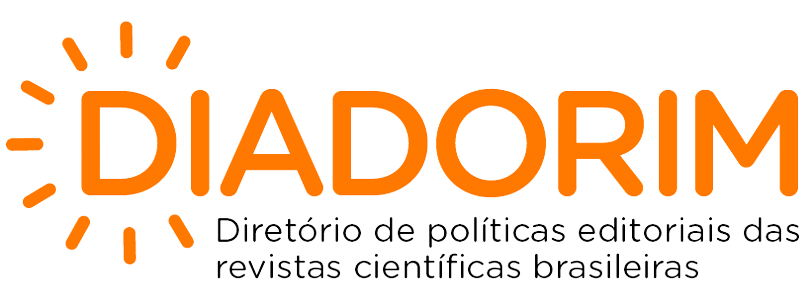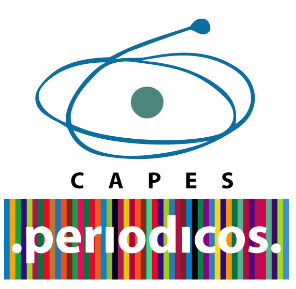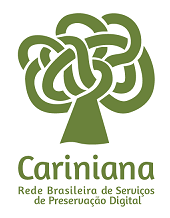Design thinking on the creation of a ufca academic library signaling proposal: research report
DOI:
https://doi.org/10.5433/2317-4390.2019v8n2p20Keywords:
Design Thinking, Academic Library, Sineage, ToolsAbstract
Introduction: Faced with the changes that have taken place in recent years in the academic library environment, the management of this space faces a new type of user already used to information technology that has created new yearnings. The signage should then be thought for this type of user as well as extend also to the issue of accessibility so it is important to review the services and products offered by the library within this approach.
Objective: It presents a research report on the design of signaling solutions using Design Thinking tools with the engagement of users from the Central Library of the Universidade Federal do Cariri (UFCA).
Methodology: Qualitative in nature the study comprised the use of a focus group where ten users of the Academic Library of UFCA were interviewed. Practical in nature and with exploratory objectives, its approach was in the action research format, aiming to promote the cooperation of users of the Juazeiro do Norte Campus library in the design of environmental signaling solutions.
Results: Collaborative engagement among participants was perceived, involving them in a protagonist and enthusiastic way to the challenges of identifying problems and proposing solutions for the library. The use of Design Thinking steps and tools, although recorded in a linear manner, sought to fit the process satisfactorily according to the focus group's own report.
Conclusions: The collaboration between the Design and Information Science disciplines represents an opportunity to bring Design Practice closer together in order to optimize library signaling systems, although it has been shown that the approached methods are capable of achieving even broader solutions. Above all, the main highlight to consider is the insertion of users as a fundamental part in the planning and strategies of the information science field.
Downloads
References
BROWN, Tim. Design thinking. Harvard Business Review, v. 86, n. 6, p. 85- 92, jun. 2008.
BURGUILLOS, Ferran. Design Thinking for Libraries: piensa el futuro de la biblioteca como lo haría un diseñador. Anuário ThinkEPI, v. 10, p. 109-112, 2016. Disponível em: https://recyt.fecyt.es/index.php/ThinkEPI/article/view/think epi.2016.19/30530. Acesso em: 05 jul. 2019.
GIL, AntoÌ‚nio Carlos. MeÌtodos e teÌcnicas de pesquisa social. 6. ed. São Paulo: Atlas, 2012.
IDEO. Design Thinking For Library. (Fundação Bill&Melinda Gates) Acesso em 2017. Disponível em: http://designthinkingforlibrary.com. Acesso em: 10 abr. 2018.
JOHN, Gemma. Designing libraries in 21st century: lessons for the UK. London: British Council, 2016.
JULIANI, Jordan; CAVAGLIERI, Marcelo; MACHADO, Raquel. Design Thinking como ferramenta para a geração de inovação: um estudo de caso da Biblioteca Universitária da UDESC. InCID: R. InCID: Revista de Ciência da Informação e Documentação, Ribeirão Preto, v. 6, n. 2, p. 66-83, set., 2015.
MACEDO, Paula A.; SANTOS, Ana M. S. Design Thinking para bibliotecas. In: PRADO, Jorge. (org.) Ideias emergentes em Biblioteconomia. São Paulo: FEBAB, 2016.
MELO, Adriana; ABELHEIRA, Ricardo. Design Thinking & Thinking design: metodologia, ferramentas e uma reflexão sobre o tema. São Paulo: Novatec, 2015.
PINHEIRO, Tennyson. Design Thinking Brasil: empatia, colaboração e experimentação para pessoas, negócios e sociedade. Rio de Janeiro: Elsevier, 2011.
Downloads
Published
How to Cite
Issue
Section
License
Copyright (c) 2019 Informação@Profissões

This work is licensed under a Creative Commons Attribution 4.0 International License.
A revista se reserva o direito de efetuar, nos originais, alterações de ordem normativa, ortográfica e gramatical, com vistas a manter o padrão culto da língua e a credibilidade do veículo. Respeitará, no entanto, o estilo de escrever dos autores. Alterações, correções ou sugestões de ordem conceitual serão encaminhadas aos autores, quando necessário.
O conteúdo dos textos e a citação e uso de imagens submetidas são de inteira responsabilidade dos autores.
Os trabalhos publicados passam a ser propriedade da revista Informação& Profissões, ficando sua reimpressão total ou parcial sujeita a autorização expressa da revista. Em todas as citações posteriores, deverá ser consignada a fonte original de publicação, no caso a Informação&Profissões.












